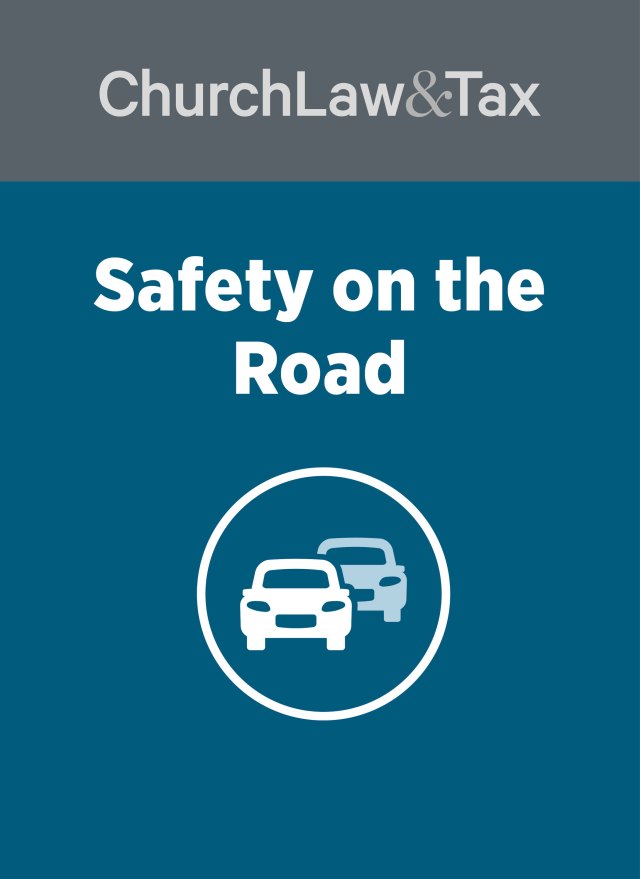• Key point 10-02. The doctrine of respondeat superior imposes vicarious liability on employers for the negligent acts of their employees committed within the scope of their employment. Negligence as a Basis for Liability
A Louisiana court ruled that a church was partially responsible for a $27 million verdict based on the death of one child and serious injuries to two other children who were passengers in a church van that was struck by a train. A church volunteer was driving several children to their homes in a church van following worship services. He eventually was left with three sisters who were 12, 11, and 7 years of age. A train struck the van as the driver entered a railroad crossing. The collision instantly killed the 12-year-old sister, rendered the 11-year-old sister a quadriplegic, and caused serious injuries to the 7-year-old sister. The girls’ parents sued the driver, church, and the railroad company responsible for maintaining the crossing. They alleged that the railroad had failed to clear away brush and weeds, which obstructed the driver’s vision, and had not installed adequate warning signs. A jury entered a verdict for $27 million and determined that the railroad was 69% at fault and the church was 31% at fault. As a result, the church was responsible for 31% of the verdict amount. Most of the damages were based on the injuries to the sister who had become a quadriplegic.
The railroad company and church appealed the judgment. The railroad company claimed that the church and its van driver were entirely responsible for the accident and should be responsible for the entire judgment. In particular, the company argued that if the van driver had stopped at the crossing, which he was legally required to do, he could have seen six hundred feet to the south and would have been able to see the approaching train. The court disagreed, relying on the testimony of an expert witness who testified that the crossing had enough traffic to warrant gates with flashing lights rather than a stop sign, and that drivers’ visions were obstructed significantly due to the groundcover. The court also referred to evidence that up to 85% of drivers do not stop at railroad stop signs, which makes gates with lights the only safe means of protecting railroad crossings. Based on this evidence, the court concluded that the jury did not err in finding the railroad to be 69% at fault.
The court also rejected the defendants’ argument that the amount of damages awarded by the jury was excessive. It noted that most of the $27 million was awarded to the 11-year-old sister who had become a quadriplegic. The court, in ruling that this amount was not excessive, observed:
[The accident not] only rendered her a quadriplegic, but also killed her older sister and injured her younger sister. Testimony indicated [she] will need twenty-four hour care for the remainder of her life and will require extensive medical treatment. Medical testimony was also presented regarding problems she has had with respiratory failure, pneumonia, scoliosis, a dislocated hip, headaches related to elevated blood pressure, urinary tract infections, and life-threatening decubitus ulcers which have required surgery. Additionally [a physician] stated that she believes [the girl] will never be free from the tracheotomy tube now in place, a tube which must be suctioned repeatedly throughout the day and night … and that [the girl] suffers from depression …. Further … due to this depression, [the girl’s] nutritional state has declined to the point where supplemental feedings are required and will best be delivered through a feeding tube …. In addition to the staggering physical, mental, and emotional obstacles associated with [her] condition, the jury was also aware that [the girl’s] school, social, and home life were drastically altered. Given the extreme circumstances presented in this case, circumstances which include not only her own injury, but the death of her sister, we do not find that the jury’s award for general damages was a clear abuse of its much discretion in this area.
Application. Consider the following two points:
1. This case dramatically illustrates the catastrophic injuries, and liability, that can be associated with momentary lapses in concentration. Who would have imagined when the van left the church parking lot that within minutes an accident would occur resulting in the death of one child, quadriplegia in another, and an eventual jury verdict of $27 million? Church leaders cannot emphasize enough the importance of safety in selecting and training those persons who will be driving others in church vehicles.
2. This case also suggests the importance of periodic reviews of the church’s insurance coverage. Church leaders should review existing coverages to determine their adequacy.
3. Does your church have an emergency response policy to guide staff in responding to an unexpected catastrophe? Most churches do not, yet such a policy can be an invaluable tool in handling emergencies. We are in the process of preparing such a policy for church use. You will receive more information about this policy in the future. Duncan v. Kansas City Southern Railway Company, 1999 WL 994098 (La. App. 1999).
© Copyright 2000 by Church Law & Tax Report. All rights reserved. This publication is designed to provide accurate and authoritative information in regard to the subject matter covered. It is provided with the understanding that the publisher is not engaged in rendering legal, accounting, or other professional service. If legal advice or other expert assistance is required, the services of a competent professional person should be sought. Church Law & Tax Report, PO Box 1098, Matthews, NC 28106. Reference Code: m58 m86 c0500
